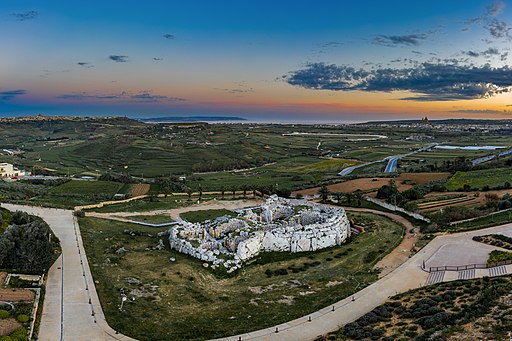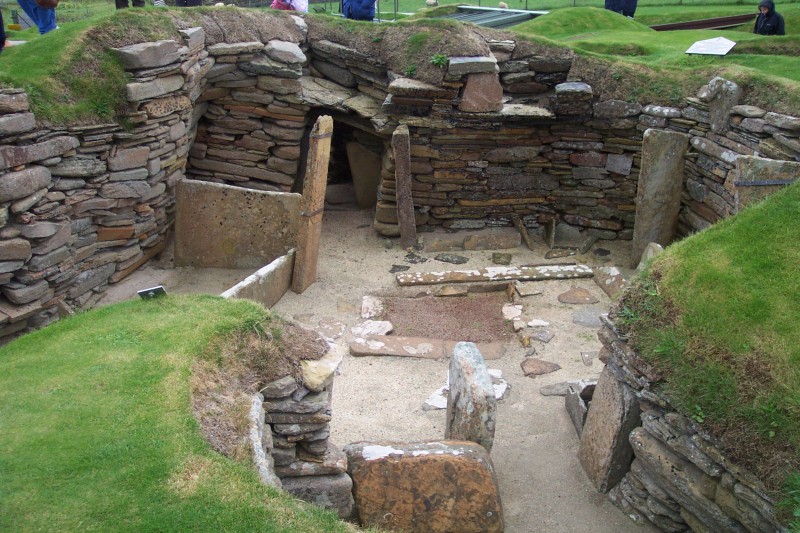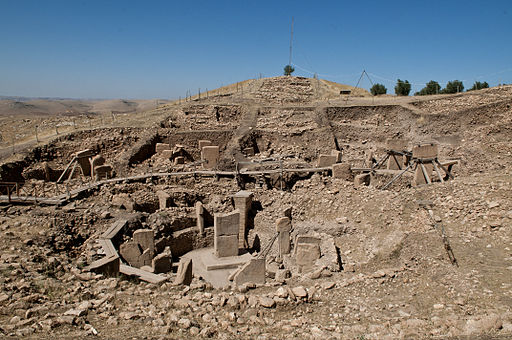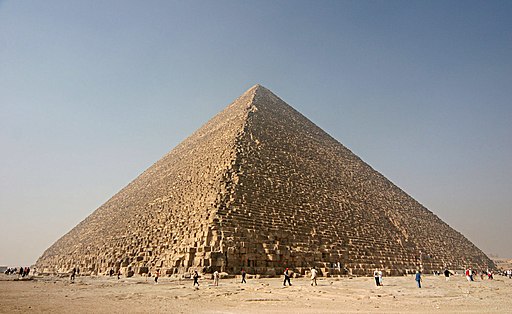Ancient Structures Older than Noah's Flood
Noah's Flood
In the mainstream Christian circles, Noah's flood is perceived to be an accurate historical event that took place in the past – and is a problem when one tries to merge this idea with actual scholarly academia in anthropology and ancient history. The problem lies in that Noah's flood is purported to have been a global flood that wiped out most of mankind and covered the entire Earth in water. Other critiques of Noah's flood aside (re-population, fitting all the animals on the boat, the folklore and oral tradition inherent to the story, God's means of "resetting" his mistakes), I find one obvious, major flaw in the story: if Noah's flood actually happened, then why are there buildings and structures older than the flood still standing?
Here I present ten structures older than Noah's flood that remain to this day. Why weren't they wiped out during a massive worldwide flood?
However, a challenging part of this post is choosing the approximate date of Noah's flood. No matter what date I pick, some Christian will say, "No, Noah's flood happened earlier than that." To prevent as much as possible this rebuttal, I have selected the date provided by a perceived expert in the conservative Christian circles: Answers in Genesis.
Answers in Genesis gives an exact year of the flood – most convenient for me – as 2348 BCE In fact, they provide an entire timeline of events based on their view of the Bible, but it's only the date of the flood that is of interest to me here.
With that date in mind, here are 10 structures older than the supposed date of Noah's flood.
White Temple of Uruk
- circa 3517 to 3358 B.C.E
Within southern Mesopotamia, in modern day Iraq, the ancient city of Uruk revered this temple, built in recognition of the sky god Anu.
It is a ziggurat and would have been whitewashed to maintain its appearance. It would have been some 40 feet tall and would have made quite the sight.
Mastaba S3503
- circa 3000 BCE
In Lower Egypt, at the Saqqara necropolis, one can find the remnants of a burial tomb built during the first dynasty.
Who the tomb built for remains anonymous as the previous contender later had their tomb found elsewhere.
The tomb was discovered by Egyptologist Walter Bryan Emery during his excavations in 1938.
Ġgantija
- circa 3600 to 2500 BCE
The second oldest known existing man-made religious structure, this megalithic temple hails from the island of Gozo in the country of Malta. It was dedicated as a place of worship and ceremonial fertility rites to a goddess in Gozitan folklore.
In 1827, then governor of the island of Gozo had the site excavated and revealed the ruins.
Mnajdra
- circa 3600 to 3200 BCE
Another megalithic temple complex in Malta, Mnajdra was used as an astronomical calendar and probably ritual sacrifices.
It is built of coralline limestone in a cloverleaf pattern and listed as an iconic "unique architectural masterpiece" by the World Heritage Site committee.
Ħaġar Qim
- circa 3600 to 2500 BCE
Next door to our previous structure, is this other megalithic temple complex (seen as a separate structure as the limestone materials used are different: slightly harder in this one). Study of the structure suggest it was a temple used for ritual sacrifice, possibly oracles, and not used for burial.
Skara Brae
- circa 3180 to 2500 BCE
This stone built settlement located in the Bay of Skaill in Scotland, was used for housing, including hearths, beds and cupboards for its citizens.
It was discovered by accident when a storm hit in 1850 and uncovered the housing unit. University of Ediburgh professor, V. Gordon Chile, began a thorough review of the site in 1927.
Göbekli Tepe
- circa 9500 to 8000 BCE
The world's oldest known megalith, Göbekli Tepe is such an important site to learn about early Neolithic culture, representing possibly the oldest human settlement anywhere. Its many pillars house vast amounts of information on humanity's pastimes, clothing, survival and history.
It is found in modern day Turkey and is still to this day being excavated and explored for more information about our past.
Céide Fields
- circa 3500 BCE
Found in western Ireland, these fields are a collection of earthwork, tombs and houses beneath the bog. It is the most extensive Neolithic site in Ireland.
Stonehenge
- circa 3100 BCE and rebuilt several times until 1600 BCE
A most recognizable structure and found in the Salisbury Plain of England, Stonehenge is a famous landmark and tourist destination year round. What most people do not realize is how old it probably is. Evidence of multiple rebuilds point to the earliest sometime around 3100 BCE.
Its usage remains debatable, as the civilizations that built it left no record or meaningful traces of its use. Scholars have theorized burial site, religious site, astronomical calendar, ritual site and even a place of healing.
Great Pyramid of Giza
- circa 2700 to 2500 BCE
The oldest and largest of the pyramids in Giza and the only one of the Seven Wonders to remain intact, the Great Pyramid of Giza was the tallest man-made structure in the world for nearly 3800 years. The pyramid continues to astonish and amaze visitors today even as it did in ancient Greece, Rome and the Middle Ages.









